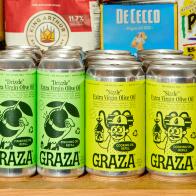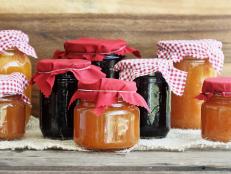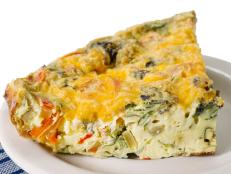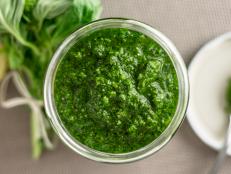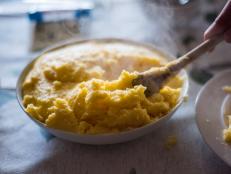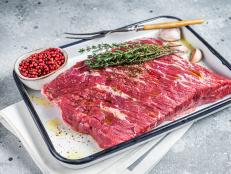Pecorino vs. Parmesan: What’s the Difference?
And can you use them interchangeably?

FRANCESCO VIGNALI/Getty Images
By Layla Khoury-Hanold for Food Network Kitchen
Layla Khoury-Hanold is a contributor at Food Network.
You probably reach for Parmesan and Pecorino to grate over pasta or to finish roasted veggies. But even though these hard Italian cheeses look the same, there’s more to them than meets the eye. Here, we break down the differences between Pecorino and Parmesan and when to use each.

Junior Gonzalez/Getty Images
What Is Parmesan?
Parmesan is a hard, dry cheese made from cow’s milk. Under Italian law, only cheese produced in Bologna, Mantua, Modena or Parma can be labeled Parmigiano-Reggiano. Parmigiano-Reggiano is aged for a minimum of 12 months and up to 4 years. (Parmesan is not regulated in the U.S.; domestic-made versions are aged for a minimum of 10 months.) Parmesan has a hard, light-yellow rind with a golden interior boasting a nutty flavor, though longer-aged Parmesans can also have mellow caramel notes.

Liv Oeian / EyeEm/Getty Images
What Is Pecorino?
Pecorino is a hard, salty cheese made from sheep’s milk—in fact, the name pecorino comes from the Italian word pecora, which means "sheep." In Italy, there are three main types of Pecorino which are categorized by aging time: fresco, semi-stagionato and stagionato. The longer the cheeses age, the saltier they taste and the firmer and crumblier they are, making them well suited for grating. Pecorino has a grassy, earthy flavor profile with a sharp saltiness and touch of tanginess. For more on how Pecorino is made, the different types and how to use it, check out our primer Everything You Need to Know About Pecorino Cheese.
The Differences Between Parmesan and Pecorino
Pecorino and Parmesan are both aged, salty hard cheeses, but the main difference is that Pecorino is made with sheep’s milk and Parmesan is made with cow’s milk. Their aging times also differ: Pecorino is aged for a few months to a year, whereas Parmesan is aged anywhere from 12 months to 3 years (some U.S.-made Parmesan is aged for less than a year). Because Parmesan is aged longer, it is harder, drier, and has more of a nutty, sweeter flavor profile; some long-aged Parmesans also have mellow caramel notes. Pecorino, which is younger, tends to be softer and creamier, and tastes brighter, grassier and tangier. It also has a pronounced saltiness. If the cheeses have their rind intact, you’ll notice that Pecorino has a black, waxy rind while Parmesan has a hard, light-yellow rind (if the words Parmigiano-Reggiano are stenciled on the rind, you’ll know it was produced in Italy).

Westend61/Getty Images
Can You Use Parmesan and Pecorino Interchangeably?
In a pinch you can use Parmesan and Pecorino interchangeably, but it’s ideal to use whichever cheese the recipe calls for. If substituting Pecorino for Parmesan, remember that Pecorino tends to taste saltier, so try using one-third less Pecorino to keep salt levels in line. Parmesan can step in for Pecorino, but keep in mind that it won’t have the same salty, tangy flavors as Pecorino, so you may need to adjust seasoning accordingly.
Pecorino Romano vs. Parmigiano: Which Dishes Are They Better In?
Parmigiano works best in namesake Parmesan dishes such as Eggplant Parmesan or Chicken Parmesan. We like Parmesan’s nutty, mellow saltiness for finishing dishes such as Shrimp Fettucine Alfredo, Spaghetti with Oil and Garlic (Aglio e Olio) or The Best Risotto. It also adds a nutty, salty snap to sides, like Parmesan Broccoli, and even breakfast, as with these Parmesan Eggs. And don’t toss those rinds! Parmesan rinds bolster stocks, soups and sauces, as with this Bolognese Bianco, which calls for both the rind and grated Parm to add savory depth. Chunks of Parmigiano also make a welcome addition to cheese boards, particularly longer-aged varieties.
Pecorino Romano is a key ingredient in classic Italian dishes such as Basil Pesto and Cacio e Pepe, where it imparts creaminess, ample saltiness and a touch of tang. We like using grated Pecorino to add a tangy-salty contrast to all manner of dishes, including gratins, like this hearty Broccoli Pecorino Gratin; salads, as with this earthy Mushroom Pecorino Salad; or dressings, like this Creamy Italian Dressing. Younger Pecorinos have a creamier texture, making them excellent for snacking, adding to cheese boards or stacking in sandwiches.
Related Links:












